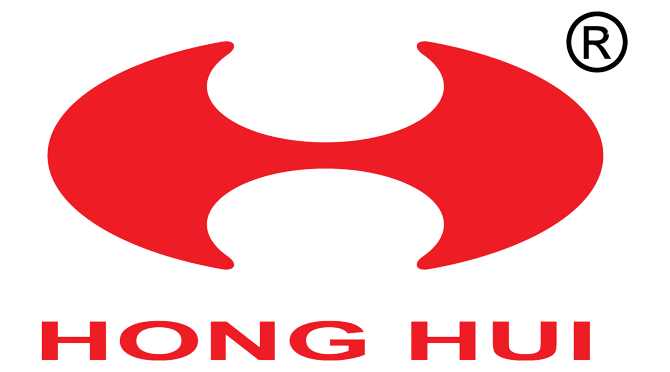27
2025
-
10
Understanding the Role of Vehicle Universal Joints in Your Drive System
Understanding the Role of Vehicle Universal Joints in Your Drive System Table of Contents What Are Universal Joints? Importance of Universal Joints in Vehicles Components of Universal Joints How Universal Joints Work Types of Universal Joints Common Issues with Universal Joints Maintaining Universal Joints Signs of Failing Universal Joints Conclusion FAQs
Understanding the Role of Vehicle Universal Joints in Your Drive System
Table of Contents
- What Are Universal Joints?
- Importance of Universal Joints in Vehicles
- Components of Universal Joints
- How Universal Joints Work
- Types of Universal Joints
- Common Issues with Universal Joints
- Maintaining Universal Joints
- Signs of Failing Universal Joints
- Conclusion
- FAQs
What Are Universal Joints?
Universal joints, commonly referred to as u-joints, are critical components in a vehicle's drive system. They are designed to allow for the transmission of torque and rotation between two shafts that are not in line with each other. In simpler terms, universal joints enable the drive shaft to pivot smoothly, accommodating the up-and-down motion of the vehicle's suspension while maintaining power transfer from the engine to the wheels.
Importance of Universal Joints in Vehicles
The significance of universal joints in vehicles cannot be overstated. They play a crucial role in ensuring a smooth driving experience by allowing flexibility in the drivetrain. Without functioning universal joints, the drivetrain would be rigid, leading to excessive wear and potential failure of other components. In essence, they support the vehicle's ability to handle various terrains and driving conditions, enhancing safety and ride comfort.
Components of Universal Joints
Universal joints consist of several key components, each playing a vital role in their overall function:
- Cross: The central part of the u-joint that connects the two shafts and facilitates rotation.
- Yokes: These are the arms that hold the cross in place, attaching it securely to the drive shafts.
- Needle Bearings: These help reduce friction as the cross rotates within the yokes, allowing for smooth movement.
- Seal: Each u-joint is equipped with seals to keep lubrication in and contaminants out, ensuring longevity.
How Universal Joints Work
Universal joints work by allowing rotational motion to be transmitted while accommodating angular misalignment between the shafts. As the drive shaft rotates, the cross pivots within the yokes, enabling the drive shaft to flex as needed. This flexibility is essential, especially when the vehicle encounters bumps or uneven surfaces. In more technical terms, universal joints can handle up to a certain degree of angular displacement, ensuring that torque is effectively transferred without significant loss of power.
Types of Universal Joints
There are several types of universal joints used in vehicles, each suited for different applications:
- Standard U-joints: Commonly found in most vehicles, these are simple and effective for general use.
- Double Cardan Joints: Used in high-performance applications, these joints consist of two u-joints and provide smoother operation and increased strength.
- Rzeppa Joints: Found in front-wheel drive vehicles, these joints allow for greater angular displacement and are often used in conjunction with constant velocity (CV) joints.
Common Issues with Universal Joints
Like any vehicle component, universal joints can encounter issues that may affect their performance. Some common problems include:
- Worn Bearings: Over time, the needle bearings can wear out, leading to increased friction and potential failure.
- Rust and Corrosion: Moisture can cause rust, which may compromise the integrity of the seals and bearings.
- Improper Lubrication: Insufficient lubrication can lead to overheating and premature wear.
Maintaining Universal Joints
Proper maintenance of universal joints is essential to ensure their longevity and performance. Here are some maintenance tips:
- Regular Inspections: Periodically check for signs of wear, such as play in the joint or visible damage.
- Lubrication: Ensure that the u-joints are adequately lubricated, especially after off-road driving or exposure to harsh conditions.
- Prompt Repairs: Address any issues immediately to prevent further damage to the drivetrain.
Signs of Failing Universal Joints
Recognizing the signs of failing universal joints is crucial for preventing serious damage. Some indicators to watch for include:
- Vibration: Unusual vibrations while driving can signal that the u-joints are failing.
- Clunking Noises: Hearing clunking or popping sounds when accelerating or decelerating may indicate loose or worn joints.
- Fluid Leaks: If you notice grease leaking from the seals, it's a clear sign that the joint may need replacement.
Conclusion
Universal joints are integral components of your vehicle's drive system, providing the necessary flexibility and ensuring efficient power transfer. Regular maintenance and awareness of potential issues can significantly prolong their lifespan and enhance your driving experience. By understanding the role of universal joints, you can better appreciate their importance in the overall functionality of your vehicle.
FAQs
1. How often should universal joints be inspected?
It is recommended to inspect universal joints every 12,000 to 15,000 miles, or during regular vehicle maintenance checks.
2. Can I replace universal joints myself?
While it is possible to replace universal joints yourself, it requires specific tools and knowledge. If you are unsure, it is advisable to consult a professional mechanic.
3. What causes universal joints to fail?
Common causes of failure include lack of lubrication, exposure to moisture, and excessive wear from driving conditions.
4. How much does it cost to replace a universal joint?
The cost of replacing a universal joint can vary depending on the make and model of the vehicle, but it typically ranges from $150 to $400, including parts and labor.
5. Are there any preventative measures for universal joints?
Regular lubrication, inspecting for wear and tear, and avoiding overloading your vehicle are effective ways to prevent issues with universal joints.
Related news
 Esperanto
Esperanto
 Shqiptare
Shqiptare
 Euskara
Euskara
 Zulu
Zulu
 Latinus
Latinus
 Cymraeg
Cymraeg
 தமிழ்
தமிழ்
 Slovak
Slovak
 Slovak
Slovak
 Afrikaans
Afrikaans
Share
Copyright© 2023 Jinjiang Honghui Automobile Parts Manufacture Co, Ltd. Powered by www.300.cn Tag

